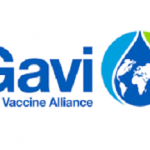FG reels out plans, targets for LPG sub sector development, says 2m jobs can be created
The Federal Government through a range of interventions and policy implementation will significantly improve domestic and industrial utilisation of Liquefied Petroleum Gas (LPG) in Nigeria, according to Vice President Yemi Osinbajo.
Prof. Osinbajo stated this on Friday at the commissioning of the Techno Oil LPG Cylinder Manufacturing Plant in Lekki, Lagos.
According him, “the Federal Government will continue to actively support every effort to promote the use of LPG in Nigeria, as well as create and maintain an effective and a catalytic regulatory environment.”
“The goal is to achieve five million Metric Tonnes (5,000,000 MT) of domestic, commercial and industrial LPG utilisation in 10 years. Specifically, for household cooking, we are targeting a 40 per cent adoption rate (i.e. 13.8m households) in 5 years, and 73 per cent adoption in 10 years (33.3m households). We believe that the sub-sector can create up to 2 million new direct and indirect jobs in Nigeria.”
He added that since the implementation of the coordination reforms, including the creation of a dedicated Project Management Office, great progress has been recorded in the various segments of the gas sector.
According to the Vice President, the progress recorded include, “removal of 5 per cent VAT from the domestic pricing of LPG, as a first step in giving domestic output an advantage against imported products.
“Development of a Marketer Cylinder Owned Model instead of the current Consumer Cylinder Owned Model. This will eliminate the consumers’ up-front purchase of LPG cylinders which, in some cases, are substandard, replacing it with a cylinder exchange, whereby the consumer only pays for the content”.
“No household will need to purchase or own an LPG cylinder. The Cylinders will be delivered and retrieved by the Marketers who will also be responsible for the maintenance and refurbishment of the cylinders, making LPG accessible to a whole new segment of non-LPG users.”








